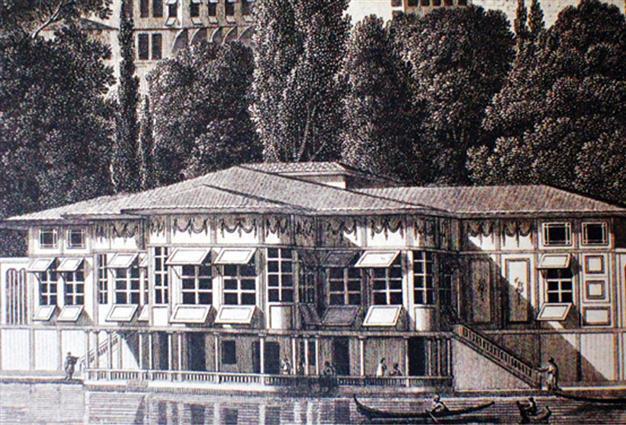Book preserving city’s forgotten sultan palaces
ISTANBUL - Anatolia News Agency

The memory of palaces that were once home to the Ottoman sultans in various
Istanbul neighborhoods but have largely disappeared over time is being preserved thanks to a decades-old book that has recently been republished.
Historian and researcher Haluk Şahsuvaroğlu’s book, “Istanbul Sarayları” (Istanbul’s Palaces), which was first published in 1954 and recently republished by the Turkish Grand National Assembly Department of National Palaces, provides information about the period’s historic places.
Palaces on coastal place Eski Saray (Old Palace), which was constructed after the conquest of Istanbul, has been replaced by Istanbul University; the Bebek Summer Palace, which was the secret meeting place of the Ottoman sultans, has been replaced by Bebek Park; while the Üsküdar Palace has been replaced by Selimiye Military Post.
After the construction of Eski Saray, the Ottoman sultans ordered the construction of palaces at Üsküdar, Aynalıkavak, İstavroz, Beşiktaş, Topkapı and Beylerbeyi coastal palace, which were large enough for all their family members. Also, hunting and resting lodges have been built on the coasts of the Golden Horn and Bosphorus and on Istanbul’s famous hills. Eski Saray was the first palace constructed for Fatih Sultan Mehmet in 1454 and occupied an area extending to the Süleymaniye Mosque.
After the construction of Topkapı Palace, Eski Saray was home to the wives of the sultans and their concubines. Sultans used to visit these women on holidays and special days, and spend time with them in their own special rooms. After a fire that occurred in 1667, the palace was restored and women living there were moved to Topkapı Palace.
Bebek Summer Palace, which is thought to have been built by Yavuz Sultan Mehmet, has become ruined over time. In 1845, when Sultan Abdülmecid asked for the restoration of the palace, one of the wardens told him that “this palace is strong enough to be home to many sultans.” The sultan then ordered the demolition of the palace and today, Bebek Park sits in its place.
Üsküdar Palace, built by the Architect Sinan, was widened with additional buildings at the time of Murad III. The palace, which was requested especially by Murat IV, was demolished after him by Selim III in 1794. The ruins of the palace were used for a military post established for the soldiers of his army, the Nizam-ı Cedid (The New Order). The palace survived until the end of 18th century and Selimiye Military Post was constructed in its place at the time of Selim III.
Neşadabad Palace, owned by Grand Vizier Şehid Ali Paşa in the 18th century, was built at the time of Selim III for his sister Hatice Sultan. The imperial architect to Sultan Selim III, Levantine artist and the architect Melling crafted the palace’s engravings.
Later on, the palace was allocated to Saliha Sultan, the daughter of Mahmud II. She lived in the palace for many years. The palace did not survive until the present day.
Ottoman Empire, architecture,
 The memory of palaces that were once home to the Ottoman sultans in various Istanbul neighborhoods but have largely disappeared over time is being preserved thanks to a decades-old book that has recently been republished.
The memory of palaces that were once home to the Ottoman sultans in various Istanbul neighborhoods but have largely disappeared over time is being preserved thanks to a decades-old book that has recently been republished.